*NURSING > STUDY GUIDE > NR 602 PEDIATRIC STUDY TOPICS GUIDE FOR NURSING SCHOOL STUDENTS, GRADED A (All)
NR 602 PEDIATRIC STUDY TOPICS GUIDE FOR NURSING SCHOOL STUDENTS, GRADED A
Document Content and Description Below
NR 602 PEDIATRIC STUDY TOPICS GUIDE FOR NURSING SCHOOL STUDENTS, GRADED AUpper tract: Pathology frequently causes noisy breathing, snoring, stridor, and musical or wheezing tracheal breath sounds ... and can be a source of referred breath sounds - Lower tract: Pathology is suggested by fine crackles, coarse crackles, rhonchus, pleural friction rub, wheezing, and bronchial breath sounds 1. Respiratory Infections a. Sinusitis- see below b. Pneumonia- see below c. Bronchitis- see below d. Croup-see below e. RSV- see below f. Diphtheria i. is a rare infection of the respiratory tract caused by toxigenic strains of gram-positive C. diphtheria ii. spread by respiratory droplets as well as contact with skin lesions, no cases since 2003, bacteria sheds for 2-6 weeks. iii. Although rare, fomites can act as a vehicle of transmission; and raw milk and milk products can transmit C. diphtheriae. Asymptomatic carriers can transmit the organism. The incubation period averages from 2 to 7 days but occasionally can be longer ( iv. Infection is associated with a history of low-grade fever and gradual onset of symptoms over 1 to 2 days with bacterial shedding for 2 to 6 weeks if untreated. Fully immunized individuals can carry the bacteria asymptomatically and may present with a mild sore throat. v. Primary Infection: Low-grade fever, Grayish, adherent pseudomembrane found in either the nasopharynx, pharynx, or trachea, Bloody nasal discharge (with membranous pharyngitis is highly suggestive of diphtheria) Sore throat, serosanguineous or seropurulent nasal discharge, hoarseness, cough Cutaneous lesions (nonhealing ulcers with dirty gray membrane or colonization of preexisting dermatoses) infected with diphtheria (seen less often) Extensive neck swelling with cervical lymphadenitis, causing airway obstruction (due to membranous obstruction of the upper airway) Possible otic and/or conjunctival infection findings: Clinical indications of toxin production include the following: myocarditis and electrocardiographic changes, respiratory compromise, cranial nerve and local neuropathies, and peripheral neuritis. vi. A confirmatory diagnosis is based on a positive culture of C. diphtheriae. Specimens should be obtained from the nose, throat, any [Show More]
Last updated: 1 year ago
Preview 1 out of 23 pages

Buy this document to get the full access instantly
Instant Download Access after purchase
Add to cartInstant download
We Accept:

Reviews( 0 )
$13.00
Document information
Connected school, study & course
About the document
Uploaded On
Sep 04, 2021
Number of pages
23
Written in
Additional information
This document has been written for:
Uploaded
Sep 04, 2021
Downloads
0
Views
40

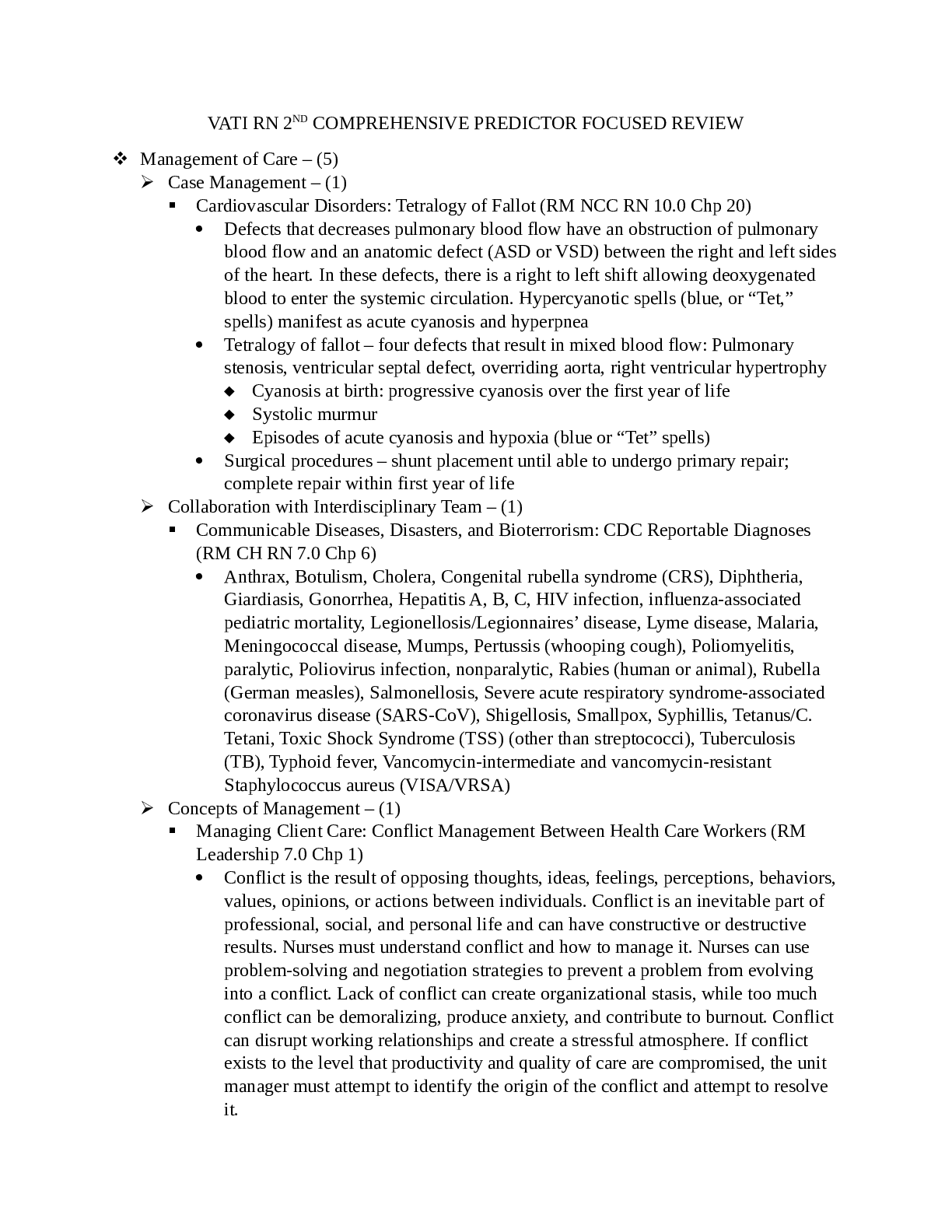

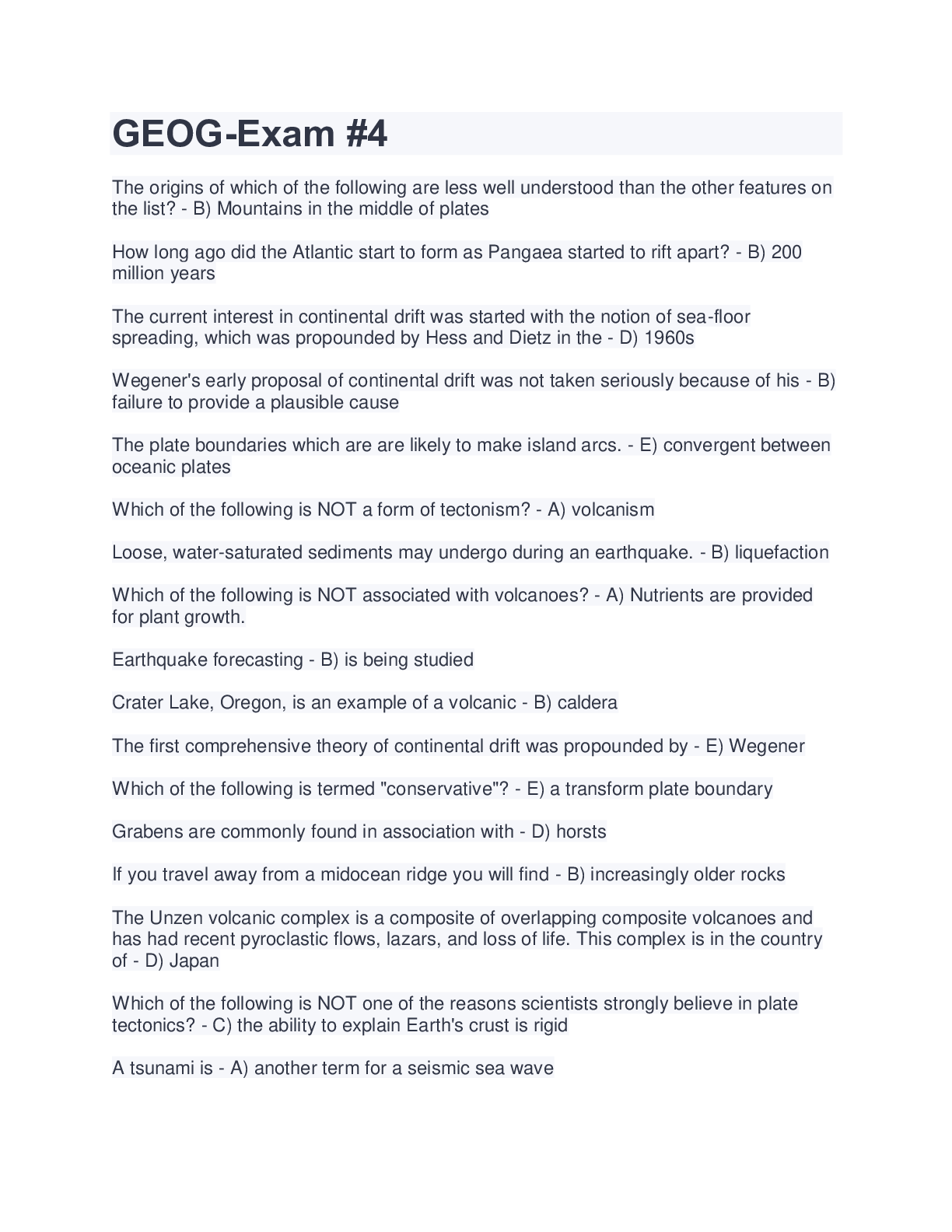

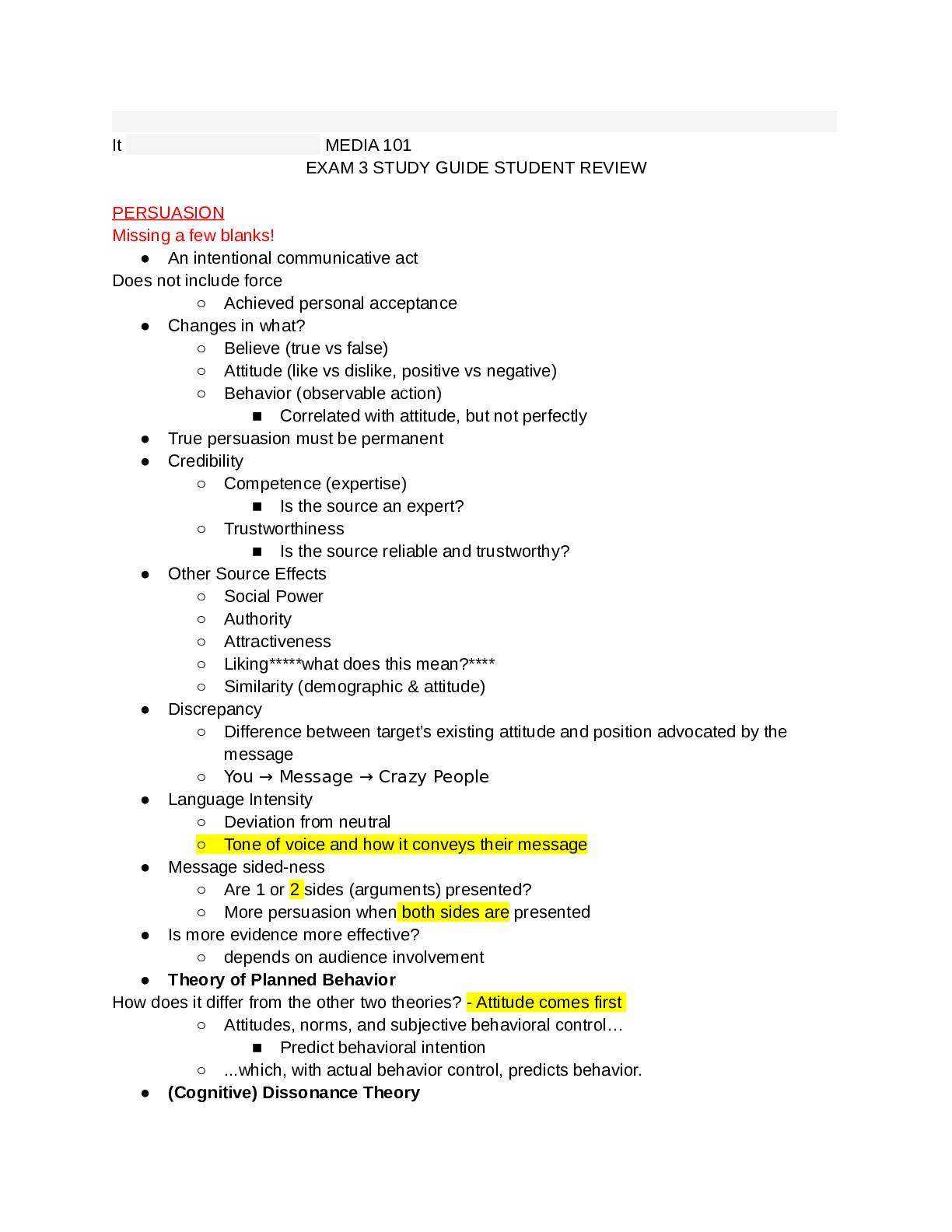
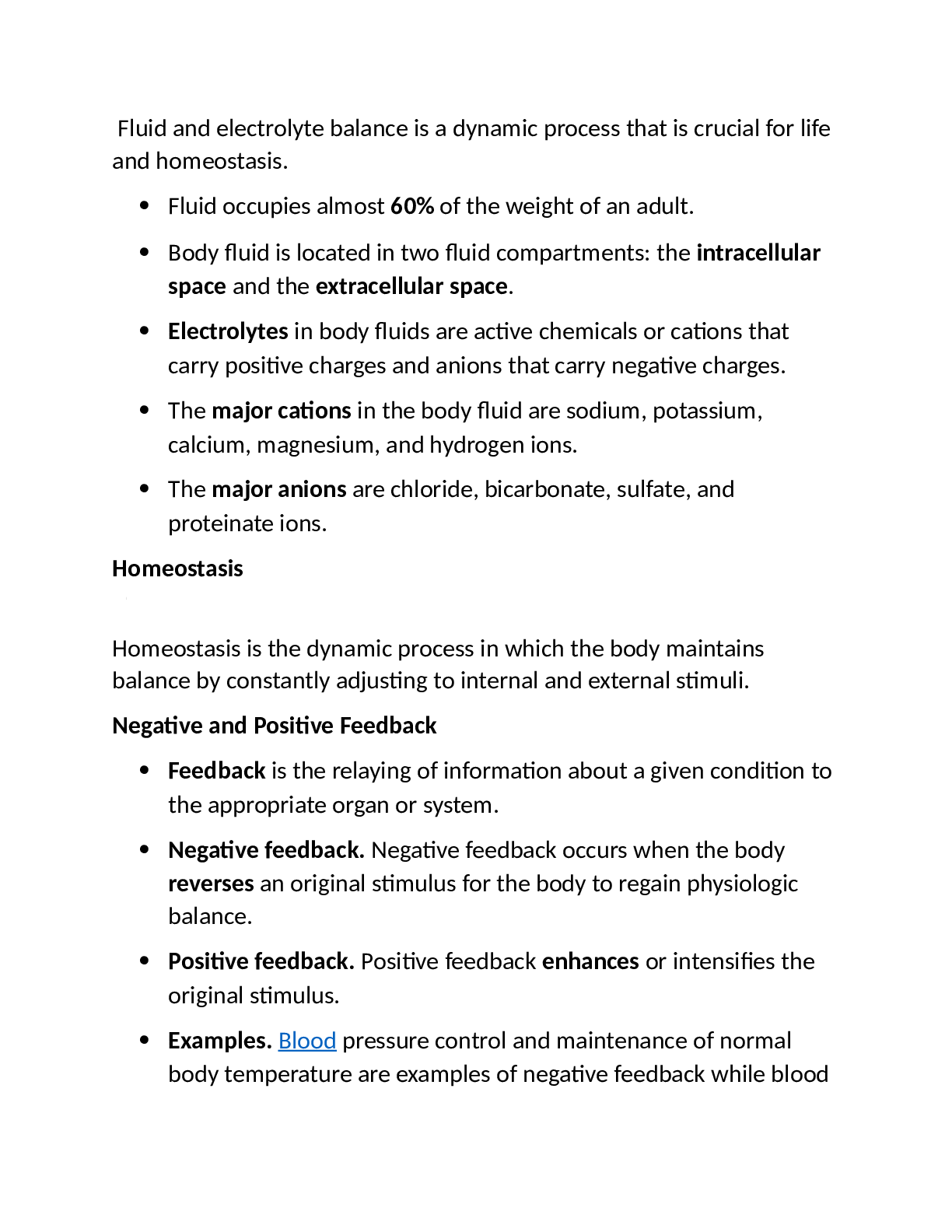

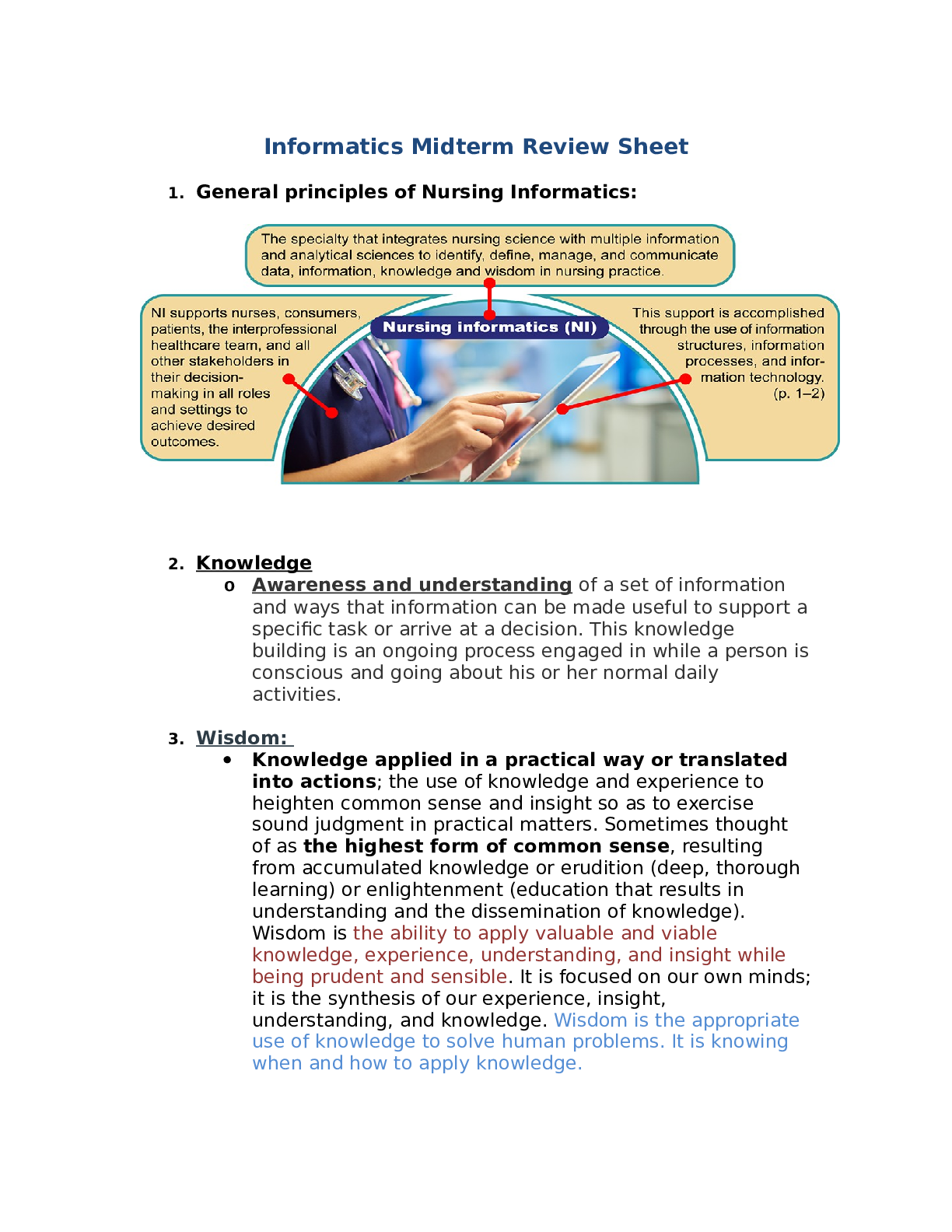

.png)
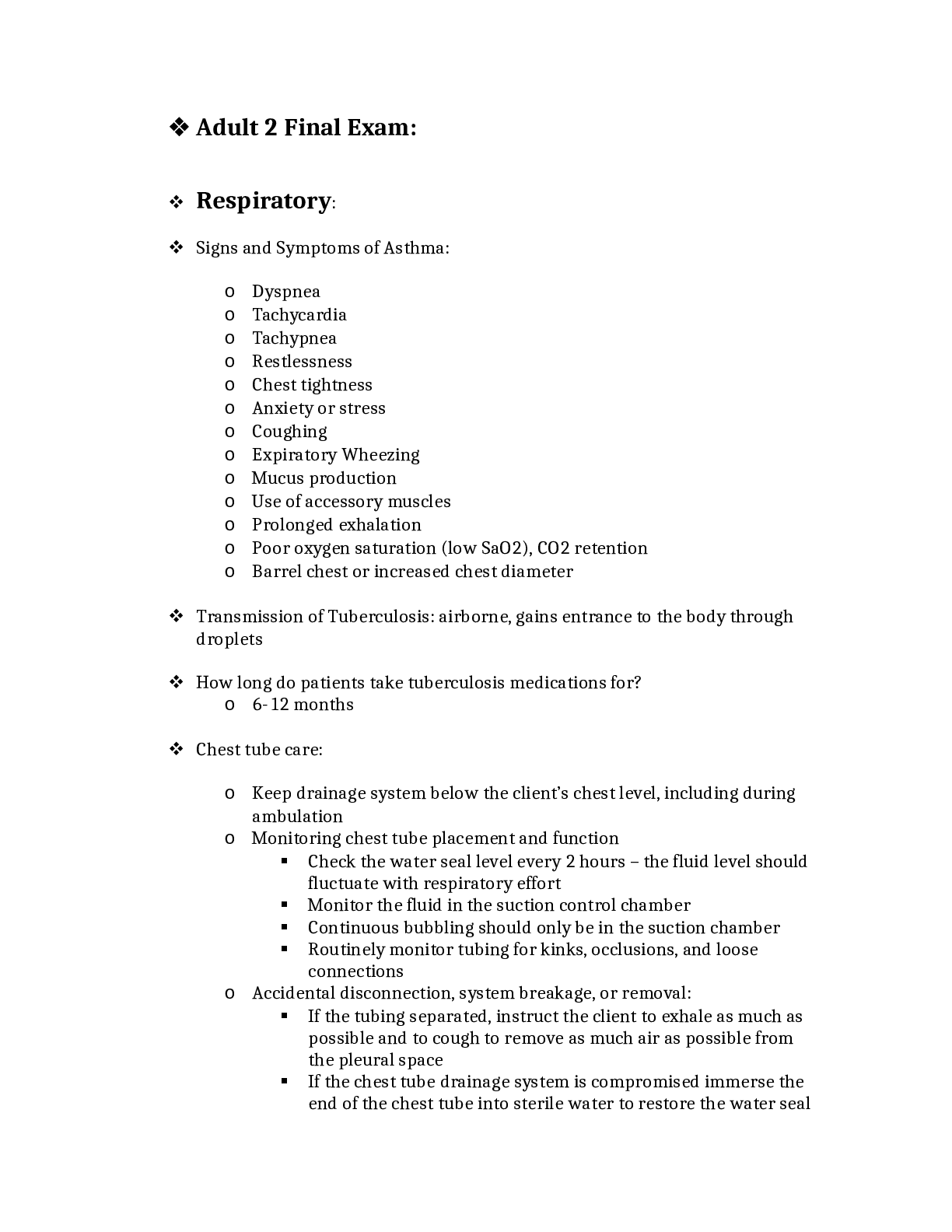



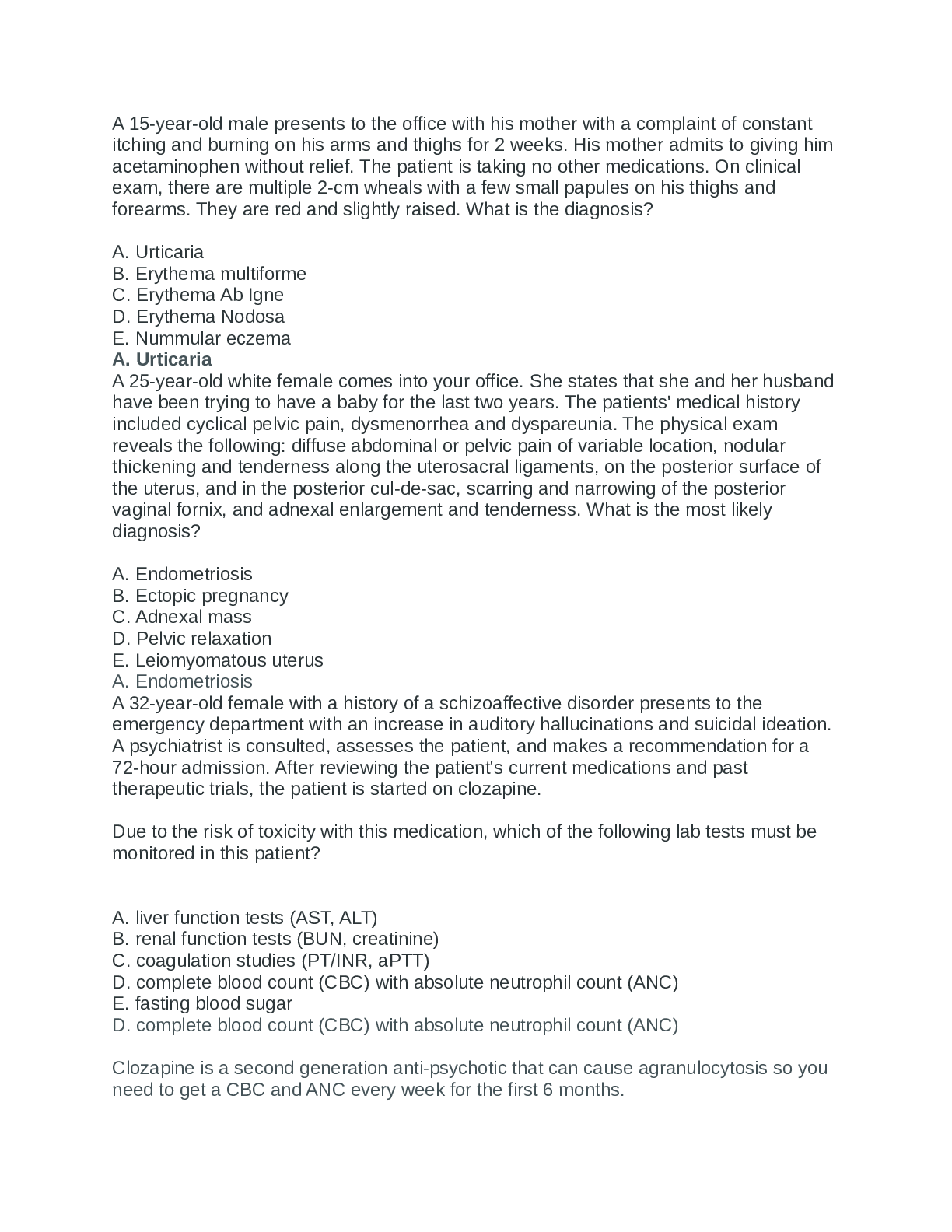
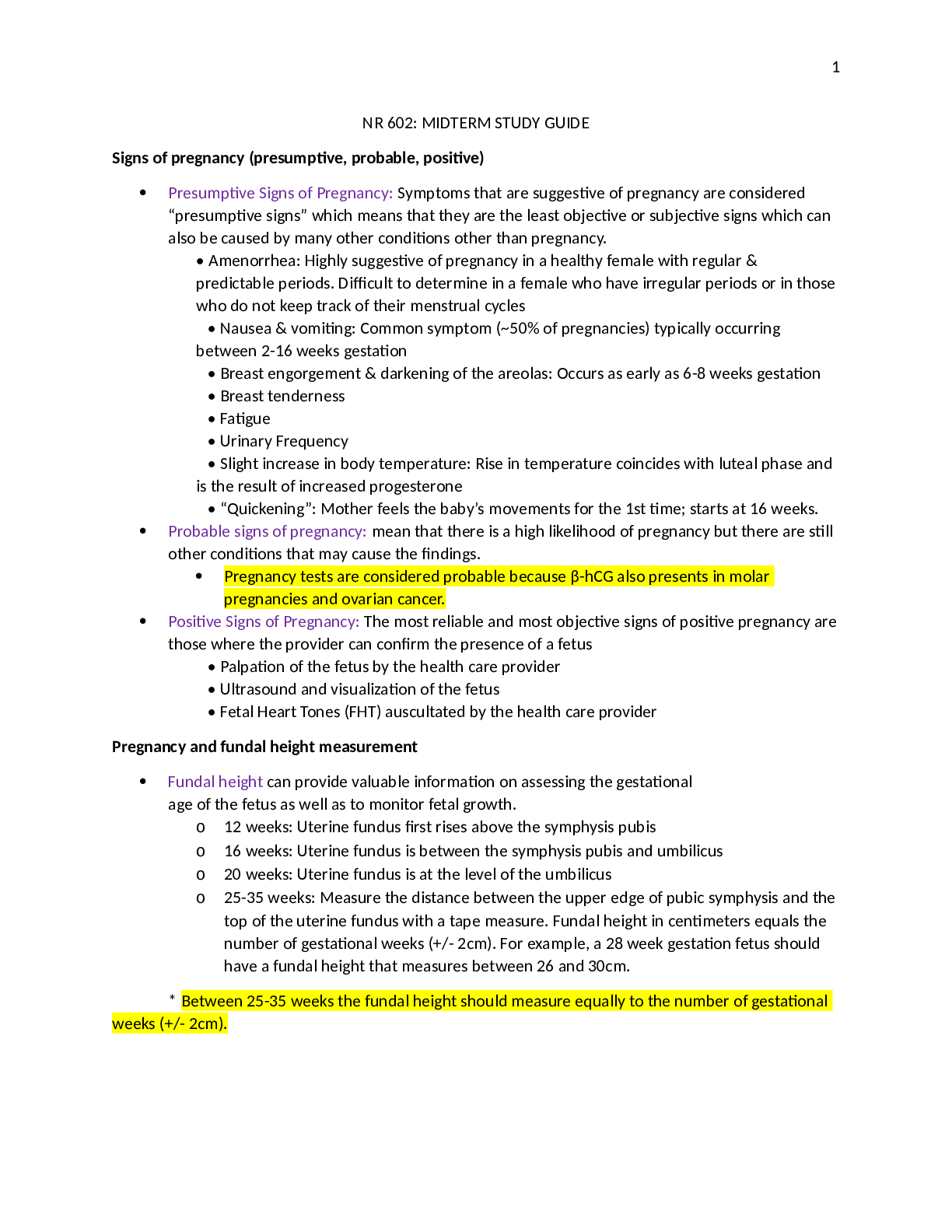
.png)

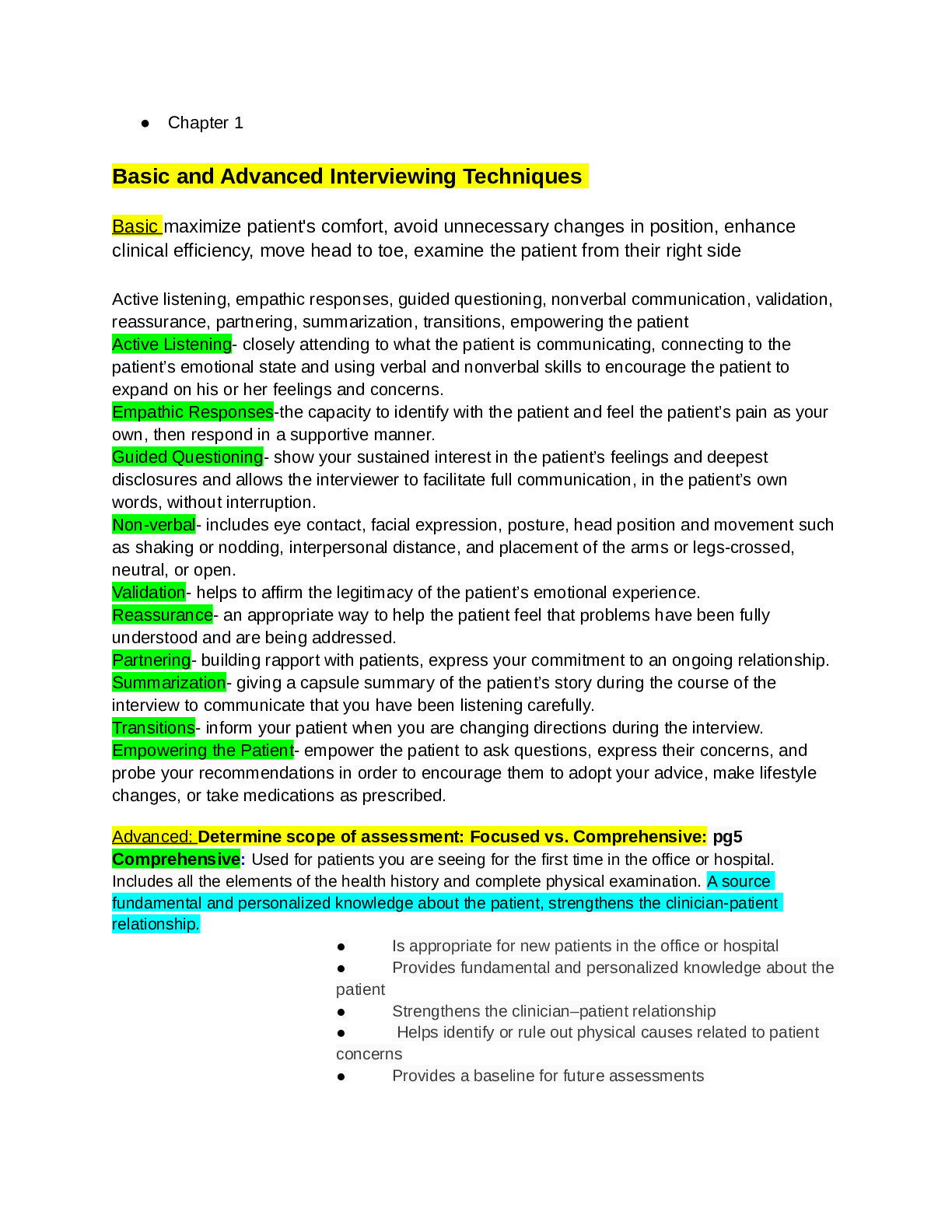

.png)

